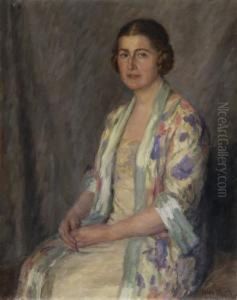Malva Schalek Paintings
Malva Schalek, born on January 1, 1882, in Prague, was a talented artist whose life and career were tragically cut short by the events of World War II. Coming from a Jewish family, Schalek pursued her passion for art from a young age, despite the societal challenges she faced both as a woman and as a member of a Jewish community in early 20th-century Europe. She studied at the Ladies' Academy of the Association of Austrian Artists in Vienna, a pioneering institution that provided art education to women at a time when most art academies were closed to them.
Schalek established herself as a portraitist and landscape painter, with a keen eye for detail and a vibrant use of color that brought her subjects to life. Her work was well-received, and she quickly gained a reputation for her portraits, which not only captured the physical likeness of her subjects but also seemed to delve into their inner lives. Schalek's talent allowed her to travel and exhibit her work in several European cities, including Vienna, Prague, and Paris, further cementing her status as a rising artist of her time.
However, Schalek's promising career was dramatically interrupted by the outbreak of World War II and the subsequent persecution of the Jews by the Nazi regime. In 1942, she was deported to Theresienstadt ghetto and concentration camp, a place where the Nazis incarcerated many of the Jewish intelligentsia and artists. Despite the harsh conditions, Schalek continued to paint, documenting life in the camp with a poignant and unflinching realism. Her works from this period provide a unique visual record of the daily lives of the camp's inmates, including portraits of her fellow prisoners and scenes depicting the struggle for survival in the face of the Holocaust.
Malva Schalek's life came to a tragic end on May 18, 1944, when she was murdered in the Auschwitz concentration camp. Despite her untimely death, her art remains a powerful testament to her talent, resilience, and the indomitable human spirit in the face of unimaginable adversity. Today, her works are preserved in various collections and continue to be exhibited, serving as a poignant reminder of the lives and talents lost during the Holocaust.


